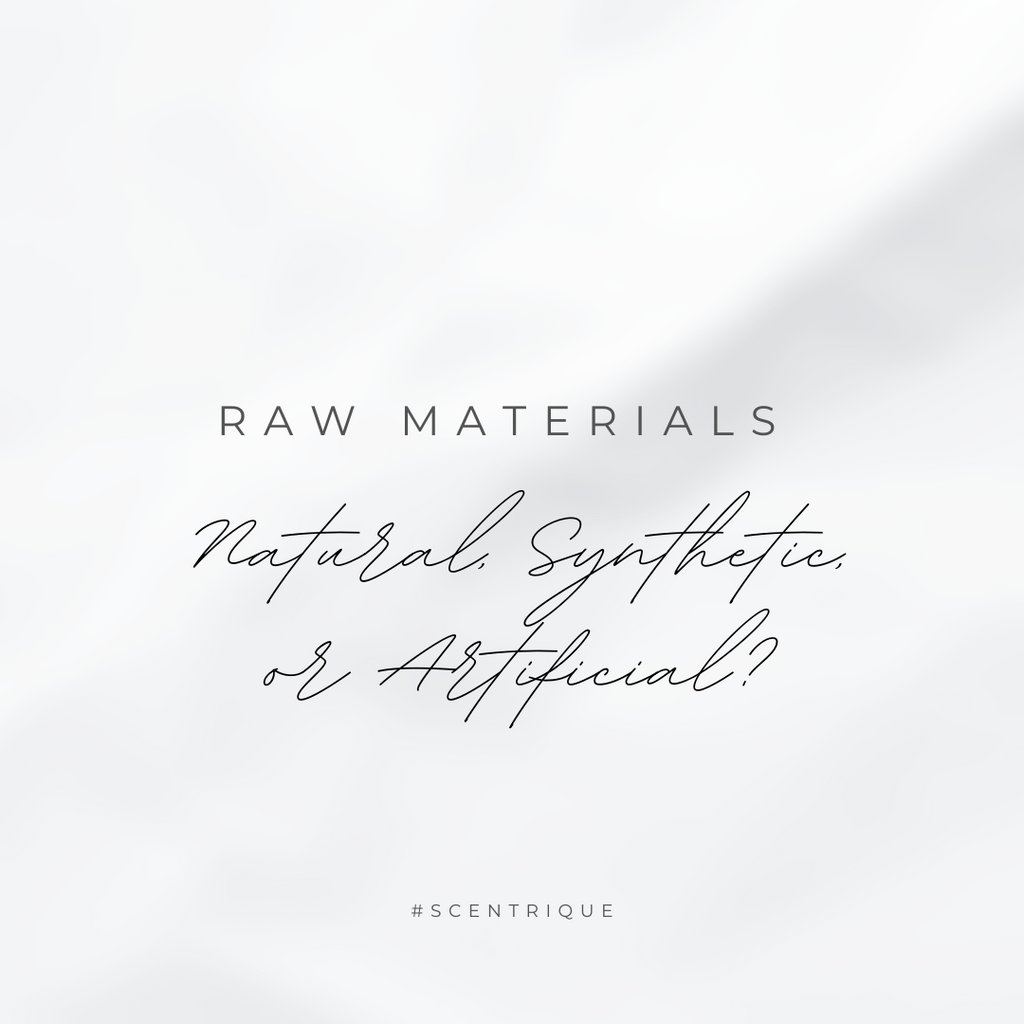Raw Materials: Natural, Synthetic, and Artificial


Today, I am here to clear up any misconceptions on these three words you might’ve heard surrounding the raw materials used in the perfumery industry: natural, synthetic, artificial.
A natural raw material used in perfumery such as an orange is taken directly from the orange tree. The orange peel undergoes a method of extraction known as cold expression where the peels are mechanically pressed to produce the orange essential oil which contains a variety of molecules.
Using the same example, synthetic raw materials could also be used to represent the molecules in the orange essential oil. With the help of organic chemistry tools and machinery, we can know the exact composition of the orange essential oil, and seek to rebuild it using synthetically created raw materials in the laboratory that are the exact same in nature.
Artificial raw materials are synthetically created molecules that don’t exist in nature. These molecules can have a better scent profile than the current existing molecules, contain unique abstract scents or have a greater substantivity.
Now you must wonder, is it bad to use synthetic molecules instead of using natural raw material extracts? The answer is no!
Natural raw materials may seem harmless, but they may contain allergens and carcinogens that can be avoided by using synthetic molecules. Due to the International Fragrance Association (IFRA), numerous molecules are being banned completely or limited to a certain quantity in a composition. Nowadays in a perfume formula, it is customary to use around 85% of synthetic raw materials to build the foundation of the perfume, and use around 15% of naturals to highlight the perfume to give it a natural feeling. Some companies may use 0% naturals and some may even use more than 25%! This is a secret that can never truly be known :)
Learning when to use a natural and when to use a synthetic or artificial raw material requires continuous training. Perfumers need to communicate well with evaluators and account executives to work towards using the best material for the project.
Written by Long (Tony) Ye
MSc. Scent Design & Creation - ISIPCA
BEng. Chemical Engineering - McGill University
instagram: dilutedtears
